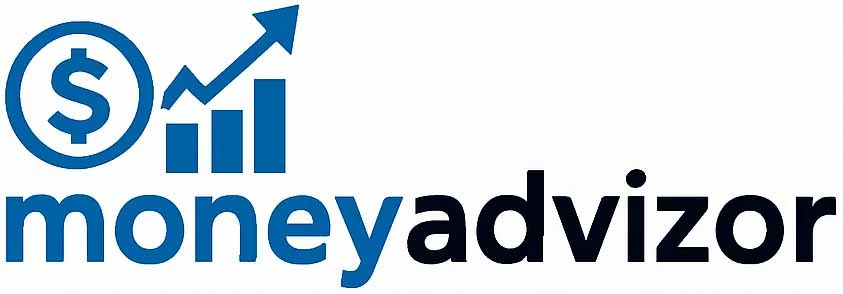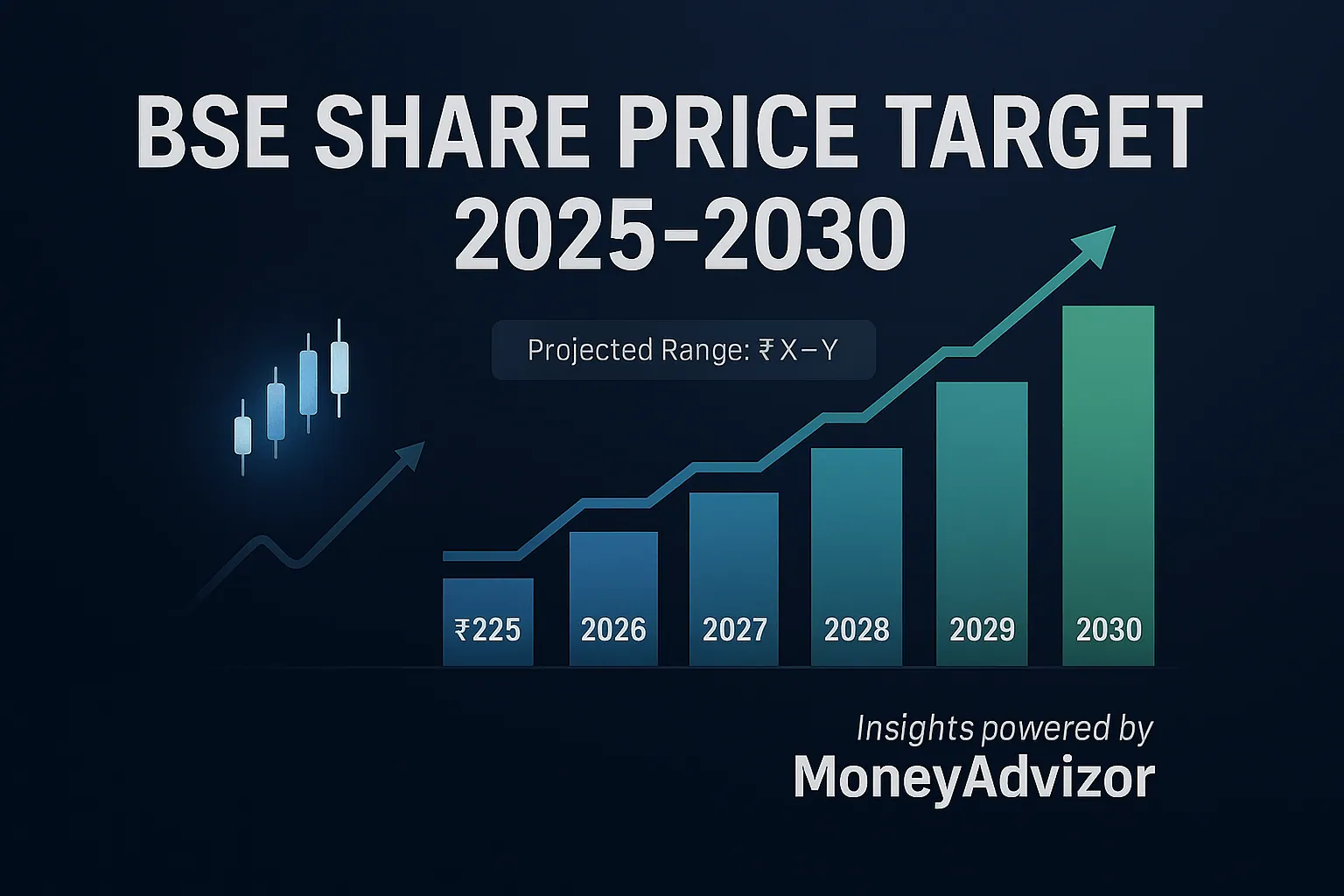Introduction
Bombay Stock Exchange (BSE), Asia’s oldest exchange and India’s first, stands as a critical barometer of the Indian economy. As investors look towards the future, understanding the potential trajectory of BSE Ltd’s (Stock Code: BOM:500011) share price from 2025 to 2030 is paramount. This in-depth analysis synthesizes fundamental and technical perspectives, expert opinions, economic forecasts, and comparative market trends to provide a well-rounded view of BSE’s potential. Crucially, share price targets are speculative and subject to significant market, economic, and regulatory risks. This analysis aims to inform, not predict.
BSE Share Price Forecast
Forecasting BSE’s share price requires analyzing multiple converging factors: India’s economic growth, the capital markets’ expansion, BSE’s competitive positioning against the National Stock Exchange (NSE), its ability to diversify revenue streams beyond transaction fees, technological advancements, and regulatory shifts. The long-term outlook is cautiously optimistic, underpinned by India’s robust economic fundamentals and the increasing formalization of savings into equities. However, intense competition and market share dynamics remain key challenges.
BSE Share Price Target 2025
- Fundamental Analysis for 2025:
- Revenue Drivers: Continued growth in equity derivatives (especially options), increased market data revenue, and scaling up of new ventures like the BSE SME platform and Star MF (mutual fund platform) are key. Success in SaaS offerings (like the BSE EBBIX cloud) will be monitored.
- Profitability: Focus will be on operating leverage – can revenue growth outpace the rise in operational costs (technology, compliance)? Sustained high volumes are crucial for transaction fee margins.
- Valuation: Based on projected FY25-26 EPS (potentially ₹25-₹30 range) and a sector PE often ranging between 25x-40x for exchanges, a fundamental range emerges. Debt levels are minimal, a positive.
- Technical Analysis for 2025:
- Key Levels: Support likely around ₹1800-₹2000 (historical consolidation zone). Resistance near ₹2400 (previous highs), then psychological ₹2500.
- Trend: The primary trend (monthly chart) needs confirmation of breaking above the ₹2300-₹2400 resistance convincingly for a strong bullish phase. Indicators like MACD and RSI will signal momentum strength/weakness at these levels.
- Patterns: Watch for continuation patterns (flags, pennants) above ₹2200 or reversal patterns if resistance holds.
- Expert Opinions for 2025:
- Brokerages generally maintain a ‘Hold’ to ‘Buy’ stance. Targets often cluster between ₹2200 and ₹2600 for end-2025.
- Consensus leans towards moderate growth, contingent on sustained market volumes and progress in non-transaction revenue streams. Concerns persist about NSE’s dominance in derivatives.
Also Read: Paradeep Phosphate Share Price Target 2025 to 2030: Expert Forecast & Analysis
BSE Share Price Target 2026
- Fundamental Analysis for 2026:
- Focus intensifies on diversification success. Meaningful contributions from SaaS, data analytics services, and the mutual fund platform are needed to reduce reliance on volatile transaction fees.
- Market share stabilization or marginal gains in key segments (cash equity, equity derivatives) would be a significant positive signal.
- Further operating leverage expected if revenue diversification accelerates. Cost control remains critical.
- Technical Analysis for 2026:
- A sustained break above ₹2500 could open the path towards ₹2800-₹3000, representing the next major resistance zones.
- Long-term moving averages (200-week EMA, currently near ₹1800) will act as dynamic support if the uptrend holds. Volume confirmation on breakouts is essential.
- Potential for a broader trading range between ₹2200 and ₹3000, depending on market cycles.
- Expert Opinions for 2026:
- Analysts project more confidence if diversification shows results in 2025. Targets could be revised upwards towards ₹2800-₹3200 if execution is strong.
- Continued emphasis on BSE’s valuation discount to NSE and potential for re-rating if the growth narrative improves. Regulatory tailwinds (e.g., promoting retail participation) benefit the sector.
BSE Share Price Target 2027
- Fundamental Analysis for 2027:
- Non-transaction revenue (SaaS, Data, Index Licensing, MF Platform) should ideally contribute 25%+ of total revenue, enhancing stability and valuation.
- Profit margins should see improvement if the high-margin SaaS and data businesses scale as expected.
- BSE’s role in facilitating SME capital raising could gain prominence, adding to its ecosystem value.
- Technical Indicators to Watch in 2027:
- ₹3000-₹3200: A major psychological and technical barrier. Breach with conviction signals strong bullish momentum.
- Relative Strength (BSE vs NSE): Monitoring this ratio is crucial. Sustained outperformance would signal a significant shift in market perception.
- Volume Profile: Identifying high-volume nodes for support/resistance. Peak volume around ₹2800-₹3000 would be significant.
- Long-term Trendlines: Adherence to the primary uptrend line (drawn from major lows) is vital for bullish structure.
- Institutional Forecasts for 2027:
- Institutional models incorporating successful diversification and moderate market share gains could project targets in the ₹3000-₹3500 range.
- Discounted Cash Flow (DCF) valuations become more relevant, heavily dependent on long-term growth assumptions for new businesses. Bullish macro views on India boost targets.
BSE Share Price Target 2028
- Revenue & Profit Projections for 2028:
- Revenue projections could reach ₹1800-₹2200 crore, driven by core market operations, strong SaaS adoption, and established data services.
- PAT margins could expand to 35-40%+ if the revenue mix shifts favorably towards high-margin segments. PAT potentially in the ₹600-₹800 crore range.
- Continued investment in technology (AI, blockchain applications) remains essential but may cap margin expansion in the short term.
- Historical Trend Analysis:
- Examining BSE’s performance through previous market cycles (bull runs, corrections, crises) provides context for volatility expectations. The stock has shown resilience but also significant drawdowns during broad market sell-offs.
- Long-term CAGR (since listing ~2017) has been around 15-20%, providing a baseline, albeit influenced by a low starting point post-listing.
- Analyst Ratings for 2028:
- By 2028, analyst sentiment will hinge demonstrably on diversification success and market share metrics. Ratings could range from ‘Hold’ (if lagging) to ‘Strong Buy’ (if executing well and gaining share).
- Price targets could bifurcate significantly: Conservative estimates near ₹3500, bullish estimates (strong growth, re-rating) potentially reaching ₹4500+.
BSE Share Price Target 2029
- Economic Factors Affecting 2029 Target:
- Indian GDP Growth: Sustained 6%+ growth fuels capital markets expansion. Slowdown poses risks.
- Interest Rates: Lower rates generally favor equity investments and exchange volumes. Persistently high rates could dampen activity.
- Inflation: Controlled inflation supports stable monetary policy. High inflation erodes investor confidence and disposable income.
- FII/DII Flows: Continued strong domestic inflows (SIPs) provide a floor. FII flows add volatility but are crucial for large moves.
- Global Recession Risk: A major global downturn would significantly impact Indian markets and BSE’s revenue.
- Industry Comparison and Outlook:
- Exchanges Globally: Trend towards consolidation, diversification (beyond trading into data, tech, indices), and embracing new asset classes (crypto, carbon credits – if regulated). BSE needs to keep pace.
- Fintech Competition: Potential threats from new platforms, though exchanges retain core infrastructure advantages. Partnerships possible.
- Regulation: Evolution of regulations around new products (e.g., international listings, retail derivatives) impacts growth opportunities.
- Shareholding Pattern Influence:
- Promoters (DSS Group): ~46% holding. Strategic focus and long-term commitment are positive.
- FIIs: ~8-10%. Increased FII holding signals international confidence but adds volatility.
- DIIs (Mutual Funds, Insurance): ~15-20%. Steady growth indicates domestic institutional confidence. Key to watch for accumulation/distribution trends.
- Retail: ~25-30%. High retail participation can increase short-term volatility but reflects broad ownership.
BSE Share Price Target 2030
- Long-Term Investment Perspective:
- BSE offers exposure to India’s long-term capital markets growth story.
- Success hinges on transforming from a pure-play exchange to a diversified financial market infrastructure (FMI) and technology solutions provider.
- Valuation re-rating potential exists if it successfully closes the gap with NSE on key metrics and proves its diversification model.
- CAGR and Growth Trajectory:
- Achieving a 15-18% CAGR from 2023 levels to 2030 would imply a price target range of ₹4500 – ₹5500.
- This requires consistent execution on revenue diversification, market share stabilization (or gains), margin expansion, and a supportive macro environment.
- Historical CAGR provides a benchmark, but future growth depends on new initiatives.
- Bull & Bear Case Scenarios:
- Bull Case (₹6000+): Exceptional execution on SaaS/data; significant market share gains in derivatives; Indian markets experience a prolonged boom; global recognition; successful new product launches; strong re-rating. CAGR 20%+.
- Base Case (₹4500-₹5500): Steady execution on diversification; stable market share; moderate growth in core business; supportive but not spectacular macro. CAGR 15-18%.
- Bear Case (₹2500-₹3500): Failure to diversify revenue; continued loss of market share to NSE; prolonged market downturn or recession; regulatory hurdles; technology disruptions. CAGR <10%.
BSE Company Overview
- Company History:
- Founded in 1875 as “The Native Share & Stock Brokers’ Association”.
- Asia’s oldest stock exchange. Pioneered electronic trading in India with BOLT in 1995.
- Demutualized and corporatized in 2005. Listed on its own exchange in 2017.
- Financial Performance:
- Revenue: Predominantly transaction fees (equity, derivatives), followed by listing fees and data revenue. Actively diversifying.
- Profitability: Generally high operating margins (often 30-40%+) due to the exchange model, but impacted by volume volatility and investment phases. Strong balance sheet with minimal debt.
- Key Metrics: Monitor Average Daily Turnover (Equity Cash & Derivatives), Market Share (vs. NSE), Non-Transaction Revenue %, PAT Margins.
- Management and Governance:
- Led by MD & CEO Sundararaman Ramamurthy (experienced exchange professional).
- Board includes representatives from the promoter group (DSS) and independent directors.
- Governance standards generally align with regulatory requirements for exchanges. Transparency in reporting is good.
Stock Market Trends & News
- BSE Related News Updates: (Monitor Reputable Sources: Moneycontrol, ET Markets, Livemint, BSE Website)
- New product launches (e.g., derivatives contracts, SME initiatives).
- Technology upgrades (cloud, AI integration).
- Strategic partnerships (e.g., tie-ups for international access).
- Market share data releases (monthly/quarterly).
- Quarterly financial results and management commentary.
- Policy Changes Impacting BSE:
- SEBI Regulations: Changes in margin rules, derivative lot sizes, FPI regulations, algo trading norms, SME listing rules directly impact volumes and costs.
- Government Policies: Taxation (Securities Transaction Tax – STT, Capital Gains Tax), policies promoting retail investment (e.g., SIPs), disinvestment programs.
- Global Standards: Adoption of global best practices in clearing, settlement (e.g., T+1, potential T+0), and ESG reporting.
- Digital India Initiatives: Push towards digital finance and formalization benefits exchanges.
- Market Sentiment Analysis:
- Track overall market indices (Sensex, Nifty) – BSE often correlates, especially in the short term.
- Monitor FII/DII activity specifically in BSE stock.
- Analyze options data (Open Interest, Put/Call Ratio) for BSE.
- Follow analyst report upgrades/downgrades and consensus estimates.
- Gauge retail investor sentiment through forums and social media (with caution).
Investor Resources
- How to Analyze Share Price Targets:
- Triangulate: Never rely on a single method. Combine Fundamental (Financials, Industry), Technical (Charts), and Sentiment analysis.
- Understand Assumptions: Critically examine the assumptions behind any target (growth rates, margins, multiples).
- Risk Assessment: Explicitly factor in risks (competition, regulation, execution, macro).
- Time Horizon: Align analysis with your investment horizon (short-term trading vs. long-term investing).
- Margin of Safety: Build a buffer between your estimate of intrinsic value and the price you pay.
- Tools for Technical Analysis:
- Charting Platforms: TradingView, Trendlyne, Investing.com, broker platforms.
- Indicators:
- Trend: Moving Averages (SMA, EMA), MACD, Parabolic SAR.
- Momentum: RSI, Stochastic Oscillator, Williams %R.
- Volatility: Bollinger Bands, Average True Range (ATR).
- Volume: On-Balance Volume (OBV), Volume Profile.
- Key Concepts: Support/Resistance, Trendlines, Chart Patterns (Head & Shoulders, Triangles, Flags), Breakouts/ Breakdowns.
- Glossary of Stock Market Terms:
- CAGR: Compound Annual Growth Rate. Smoothed annual growth rate.
- EPS: Earnings Per Share. Net profit divided by outstanding shares.
- PE Ratio: Price-to-Earnings Ratio. Share price divided by EPS. Measures valuation.
- Support/Resistance: Price levels where buying/selling pressure historically emerges.
- Bull Market/Bear Market: Sustained upward/downward market trend.
- FII/DII: Foreign Institutional Investor / Domestic Institutional Investor.
- Derivatives: Financial contracts (Futures, Options) deriving value from an underlying asset.
- STT: Securities Transaction Tax. Levied on transactions in Indian securities.
- SIP: Systematic Investment Plan. Regular investment in mutual funds.
- RSI: Relative Strength Index. Momentum oscillator (0-100).
- MACD: Moving Average Convergence Divergence. Trend-following momentum indicator.
Compare with Other Exchanges
- BSE vs NSE Share Price Trends:
- Dominance: NSE holds overwhelming dominance (~90%+) in the high-volume equity derivatives segment and a significant lead in cash equity. This drives its higher revenue, profitability, and consequently, valuation premium.
- Valuation Gap: NSE (unlisted, grey market) commands a significantly higher valuation multiple than BSE (often 2-3x+), reflecting its market position and profitability. BSE trades at a discount due to its smaller scale and market share challenges.
- Performance: Historically, NSE’s implied performance (via its unlisted shares) has significantly outpaced BSE. BSE’s share price performance is often more volatile relative to its own fundamentals due to its smaller free float and lower liquidity compared to large NSE-listed stocks.
- Key Differentiator: BSE’s strategy focuses on diversification (SaaS, Data, SME, MF) and cost leadership in specific niches to counter NSE’s scale. NSE focuses on scale, innovation, and maintaining dominance.
- BSE vs Global Indices (NYSE, LSE):
- Scale: NYSE (Intercontinental Exchange – ICE) and LSEG (London Stock Exchange Group) are global giants with massive market caps, diverse international listings, and highly diversified revenue streams (data, analytics, post-trade services, technology). BSE is a fraction of their size.
- Business Model: Global exchanges have aggressively diversified beyond transaction fees (e.g., LSEG’s acquisition of Refinitiv). BSE is earlier in this diversification journey but following a similar strategic path.
- Valuation: Global exchanges often trade at higher absolute PEs but similar or lower PEG ratios due to larger scale and proven diversification. Their growth rates might be lower than India’s potential.
- Market Focus: BSE offers pure-play exposure to the high-growth Indian capital markets story, which is a key differentiator versus the more mature markets served by NYSE/LSE.
- Sector-Wise Performance Comparison:
- Exchanges vs. Brokers: Exchanges (BSE, NSE – proxy) typically have more stable, high-margin “toll booth” models compared to brokers whose earnings are more volatile and dependent on market activity and competition. Exchanges often command higher valuations.
- Exchanges vs. Fintech: Fintechs (e.g., Policybazaar, Paytm – financial services parts) offer high growth potential but with higher risk, lower current profitability, and unproven long-term models compared to established exchanges. Valuations vary widely.
- Exchanges vs. Traditional Finance (Banks/NBFCs): Exchanges generally have lighter balance sheets (no credit risk), higher operating leverage, and different growth drivers compared to banks/NBFCs. They are more sensitive to capital market sentiment than interest rate cycles. Often trade at premium valuations to traditional finance.
Conclusion
BSE’s share price journey from 2025 to 2030 is intrinsically linked to India’s economic ascent and the evolution of its capital markets. While the exchange faces formidable competition from NSE, its strategic pivot towards diversification into SaaS, data services, and niche segments (SME, MF) offers a potential pathway to sustainable growth and valuation re-rating.
Long-term targets in the ₹4500-₹5500 range by 2030 appear achievable based on a 15-18% CAGR, assuming successful execution of its diversification strategy, stable market share, and a supportive macro environment.
However, investors must remain acutely aware of the risks: intense competition, regulatory changes, market volatility, and execution challenges in new ventures. Continuous monitoring of BSE’s market share, revenue mix evolution, cost management, and broader economic indicators is essential. BSE represents a unique, albeit challenging, opportunity to invest in the infrastructure underpinning India’s financial future. As always, thorough due diligence and a long-term perspective aligned with personal risk tolerance are paramount.




